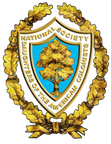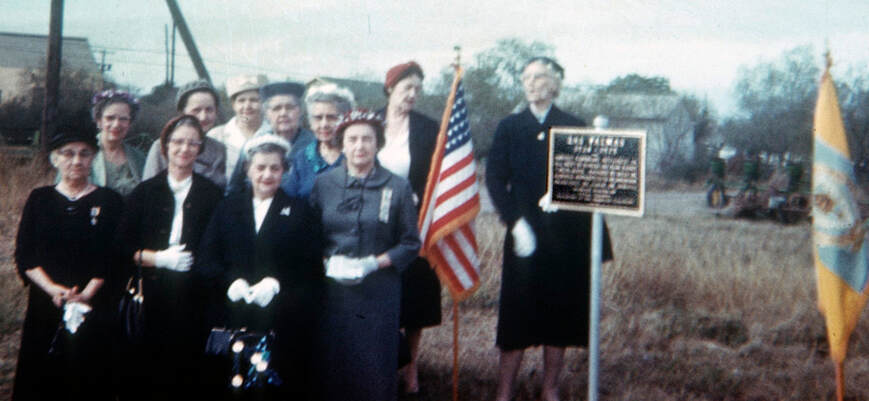09 JAN 1960
LAS PALMAS
BROWNSVILLE, TEXAS
On January 9, 1960, the Texas Society dedicated a highway marker at Brownsville at the intersection of International Boulevard and Southmost Road commemorating Las Palmas, the second temporary settlement in the United States and the earliest outside of Florida established by Europeans. In existence from early summer of 1520 to 1523 and located on what is now the Rabb Ranch, seven miles South of the marker location, Las Palmas was founded by Diego de Carmago, representative of Governor Francisco de Garay of Jamaica.
Carmago arrived with three vessels, 150 settlers, seven horsemen, some artillery, a supply of bricks and lime, and masons who were to build a fort. They entered the mouth of the Rio Grande River about where Boca Chica is now located, sailed up the stream for a few miles until they came to a grove of palms and there established a settlement. They ascended the river for a distance of about seventeen miles and landed near a group of Indian villages, where they were received as friends. The Spaniards remained in the area for almost three years before the Indians, exasperated by the increasing demands of the Europeans, rebelled and drove them out, pursuing them in canoes as far as the mouth of the river in the spring of 1523. Governor Garay arrived in the region himself with sixteen vessels and many settlers, but decided to remove to the Panuce area because of the dissatisfaction of the natives.
The site is famous for the grove of palms for which the settlement was named. The grove has stood for more than four hundred years and has weathered hurricanes, freezes and droughts. The history of the place was derived from an old Spanish map made by Cortino in 1502, which showed that what is now the Rio Grande River was at the time — ten years after Columbus discovered America — called Las Palmas. The palms grew from the river on both sides for about ten miles, though it is not known how the seeds were first planted. The trees are still in their native state, and this is the only large native Las Palmas grove in the United States outside of Florida. About thirty-five acres are covered by the grove.
At a luncheon following the dedication ceremony, Robert Runyan of Brownsville, Valley botanist, told the group that the fruit of the Las Palmas was similar to the date and that the trees bloom in June and mature in September. He pointed out that, though the trees had withstood heat, cold. and drought for more than four hundred years, they had not been classified or named until a few months previous to the erection of the DAC marker.
In recent years this marker, also erected during the administration of Mrs. Richard D. Haines, has disappeared.
Carmago arrived with three vessels, 150 settlers, seven horsemen, some artillery, a supply of bricks and lime, and masons who were to build a fort. They entered the mouth of the Rio Grande River about where Boca Chica is now located, sailed up the stream for a few miles until they came to a grove of palms and there established a settlement. They ascended the river for a distance of about seventeen miles and landed near a group of Indian villages, where they were received as friends. The Spaniards remained in the area for almost three years before the Indians, exasperated by the increasing demands of the Europeans, rebelled and drove them out, pursuing them in canoes as far as the mouth of the river in the spring of 1523. Governor Garay arrived in the region himself with sixteen vessels and many settlers, but decided to remove to the Panuce area because of the dissatisfaction of the natives.
The site is famous for the grove of palms for which the settlement was named. The grove has stood for more than four hundred years and has weathered hurricanes, freezes and droughts. The history of the place was derived from an old Spanish map made by Cortino in 1502, which showed that what is now the Rio Grande River was at the time — ten years after Columbus discovered America — called Las Palmas. The palms grew from the river on both sides for about ten miles, though it is not known how the seeds were first planted. The trees are still in their native state, and this is the only large native Las Palmas grove in the United States outside of Florida. About thirty-five acres are covered by the grove.
At a luncheon following the dedication ceremony, Robert Runyan of Brownsville, Valley botanist, told the group that the fruit of the Las Palmas was similar to the date and that the trees bloom in June and mature in September. He pointed out that, though the trees had withstood heat, cold. and drought for more than four hundred years, they had not been classified or named until a few months previous to the erection of the DAC marker.
In recent years this marker, also erected during the administration of Mrs. Richard D. Haines, has disappeared.

